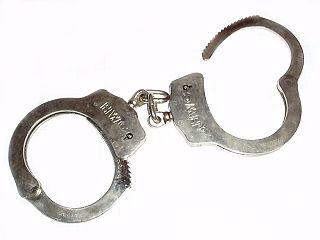Negligence is a failure to exercise appropriate and/or ethical ruled care expected to be exercised amongst specified circumstances. The area of tort law known as negligence involves harm caused by failing to act as a form of carelessness possibly with extenuating circumstances. The core concept of negligence is that people should exercise reasonable care in their actions, by taking account of the potential harm that they might foreseeably cause to other people or property.
In law and insurance, a proximate cause is an event sufficiently related to an injury that the courts deem the event to be the cause of that injury. There are two types of causation in the law: cause-in-fact, and proximate cause. Cause-in-fact is determined by the "but for" test: But for the action, the result would not have happened. The action is a necessary condition, but may not be a sufficient condition, for the resulting injury. A few circumstances exist where the but-for test is ineffective. Since but-for causation is very easy to show, a second test is used to determine if an action is close enough to a harm in a "chain of events" to be legally valid. This test is called proximate cause. Proximate cause is a key principle of insurance and is concerned with how the loss or damage actually occurred. There are several competing theories of proximate cause. For an act to be deemed to cause a harm, both tests must be met; proximate cause is a legal limitation on cause-in-fact.

Hedley Byrne & Co Ltd v Heller & Partners Ltd [1964] AC 465 is an English tort law case on economic loss in English tort law resulting from a negligent misstatement. Prior to the decision, the notion that a party may owe another a duty of care for statements made in reliance had been rejected, with the only remedy for such losses being in contract law. The House of Lords overruled the previous position, in recognising liability for pure economic loss not arising from a contractual relationship, applying to commercial negligence the principle of "assumption of responsibility".

English tort law concerns the compensation for harm to people's rights to health and safety, a clean environment, property, their economic interests, or their reputations. A "tort" is a wrong in civil law, rather than criminal law, that usually requires a payment of money to make up for damage that is caused. Alongside contracts and unjust enrichment, tort law is usually seen as forming one of the three main pillars of the law of obligations.
In tort common law, the defense of necessity gives the state or an individual a privilege to take or use the property of another. A defendant typically invokes the defense of necessity only against the intentional torts of trespass to chattels, trespass to land, or conversion. The Latin phrase from common law is necessitas inducit privilegium quod jura privata. A court will grant this privilege to a trespasser when the risk of harm to an individual or society is apparently and reasonably greater than the harm to the property. Unlike the privilege of self-defense, those who are harmed by individuals invoking the necessity privilege are usually free from any wrongdoing. Generally, an individual invoking this privilege is obligated to pay any actual damages caused in the use of the property but not punitive or nominal damages.

Home Office v Dorset Yacht Co Ltd[1970] UKHL 2, [1970] AC 1004 is a leading case in English tort law. It is a House of Lords decision on negligence and marked the start of a rapid expansion in the scope of negligence in the United Kingdom by widening the circumstances in which a court was likely to find a duty of care. The case also addressed the liability of government bodies, a person's liability for the acts of third parties that he has facilitated, and liability for omissions.

Causation is the "causal relationship between the defendant's conduct and end result". In other words, causation provides a means of connecting conduct with a resulting effect, typically an injury. In criminal law, it is defined as the actus reus from which the specific injury or other effect arose and is combined with mens rea to comprise the elements of guilt. Causation only applies where a result has been achieved and therefore is immaterial with regard to inchoate offenses.
Causation in English law concerns the legal tests of remoteness, causation and foreseeability in the tort of negligence. It is also relevant for English criminal law and English contract law.
Breaking the chain refers in English law to the idea that causal connections are deemed to finish. Even if the defendant can be shown to have acted negligently, there will be no liability if some new intervening act breaks the chain of causation between that negligence and the loss or damage sustained by the claimant.
In English law, remoteness between a cause of action and the loss or damage sustained as a result is addressed through a set of rules in both tort and contract, which limit the amount of compensatory damages available for a wrong.
Economic loss is a term of art which refers to financial loss and damage suffered by a person which is seen only on a balance sheet and not as physical injury to person or property. There is a fundamental distinction between pure economic loss and consequential economic loss, as pure economic loss occurs independent of any physical damage to the person or property of the victim. It has also been suggested that this tort should be called "commercial loss" as injuries to person or property can be regarded as "economic".
Smith v Littlewoods Organisation Ltd [1987] UKHL 18 was a House of Lords decision on duty of care in the tort of negligence. It was specifically concerning the potential liability for the wrongdoing of third parties.

Spartan Steel & Alloys Ltd v Martin & Co (Contractors) Ltd [1973] QB 27 is a well-known English Court of Appeal case concerning the recovery of pure economic loss in negligence.
Affreightment is a legal term relating to shipping.
South Australia Asset Management Corporation v York Montague Ltd and Banque Bruxelles Lambert SA v Eagle Star Insurance Co Ltd [1996] UKHL 10 is a joined English contract law case on causation and remoteness of damage. It arose out of the property crash in the early 1990s, whereby banks were suing valuers for overpricing houses in order to recover the lost market value. Owners themselves often had little or no money, since they had fallen victim to negative equity, so mortgage lenders would pursue a valuer instead to recover some losses. The legal principle arising from the case is often referred to as the "SAAMCO principle".
Nuisance in English law is an area of tort law broadly divided into two torts; private nuisance, where the actions of the defendant are "causing a substantial and unreasonable interference with a [claimant]'s land or his/her use or enjoyment of that land", and public nuisance, where the defendant's actions "materially affects the reasonable comfort and convenience of life of a class of Her Majesty's subjects"; public nuisance is also a crime. Both torts have been present from the time of Henry III, being affected by a variety of philosophical shifts through the years which saw them become first looser and then far more stringent and less protecting of an individual's rights. Each tort requires the claimant to prove that the defendant's actions caused interference, which was unreasonable, and in some situations the intention of the defendant may also be taken into account. A significant difference is that private nuisance does not allow a claimant to claim for any personal injury suffered, while public nuisance does.

The doctrine of deviation is a particular aspect of contracts of carriage of goods by sea. A deviation is a departure from the "agreed route" or the "usual route", and it can amount to a serious breach of contract.

Dutton v Bognor Regis Urban District Council [1972] 1 QB 373 is an English contract law and English tort law case concerning defective premises and the limits of contract damages. It was disapproved by the House of Lords in Murphy v Brentwood DC and is now bad law except in Canada and New Zealand.
Vehicle insurance in the United States is designed to cover the risk of financial liability or the loss of a motor vehicle that the owner may face if their vehicle is involved in a collision that results in property or physical damage. Most states require a motor vehicle owner to carry some minimum level of liability insurance. States that do not require the vehicle owner to carry car insurance include Virginia, where an uninsured motor vehicle fee may be paid to the state, New Hampshire, and Mississippi, which offers vehicle owners the option to post cash bonds. The privileges and immunities clause of Article IV of the U.S. Constitution protects the rights of citizens in each respective state when traveling to another. A motor vehicle owner typically pays insurers a monthly fee, often called an insurance premium. The insurance premium a motor vehicle owner pays is usually determined by a variety of factors including the type of covered vehicle, marital status, credit score, whether the driver rents or owns a home, the age and gender of any covered drivers, their driving history, and the location where the vehicle is primarily driven and stored. Most insurance companies will increase insurance premium rates based on these factors, and less frequently, offer discounts.
Cattle trespass was an ancient common law tort whereby the keeper of livestock was held strictly liable for any damage caused by the straying livestock. Under English law the tort was abolished by section 1(1)(c) of the Animals Act 1971, but the tort continues to subsist in other common law jurisdictions, either in its original form as a common law tort, or as modified by statute.






